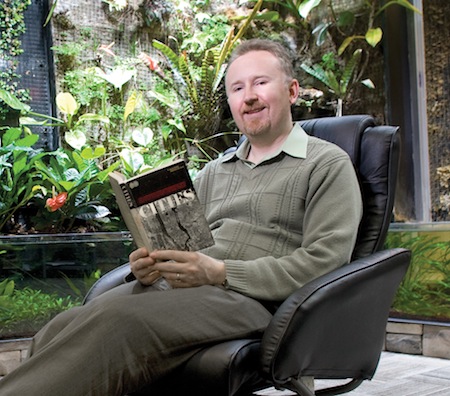Toronto – and other cities around the world – can significantly reduce greenhouse gas (GHG) emissions by implementing aggressive but practical policy changes, says a new study by Professor Chris Kennedy (CivE) and World Bank climate change specialist Lorraine Sugar (MASc CivE 1T0).
Professor Kennedy and Sugar make the claim in ‘A low carbon infrastructure plan for Toronto, Canada,’ published in the latest issue of The Canadian Journal of Civil Engineering. The paper aims to show how cities can make a positive difference using realistic, achievable steps. Their research shows that it is technically possible for cities, even in Canada, to reduce their greenhouse gas emissions by 70 per cent or more in the long-term.

“This is the sort of reduction the international community is calling for, so we can avoid the potentially serious consequences of climate change,” said Professor Kennedy.
Professor Kennedy and Sugar note that more than half of the world’s population lives in urban areas and over 70 per cent of global greenhouse gas emissions can be attributed to cities.
“Cities are where people live, where economic activity flourishes,” said Sugar. “Cities are where local actions can have global impact.”
The study focuses on buildings, energy supply and transportation. Best practices as well as options and opportunities are detailed.
“It is possible for a Canadian city, in this case Toronto, to reduce its GHG emissions by the sort of magnitudes that the international scientific community have indicated are necessary globally to keep global temperature rise below 2 C,” Professor Kennedy and Sugar write.
“With current policies, especially cleaning of the electricity grid, Toronto’s per-capita GHG emissions could be reduced by 30 per cent over the next 20 years. To go further, however, reducing emissions in the order of 70 per cent, would require significant retrofitting of the building stock, utilization of renewable heating and cooling systems, and the complete proliferation of electric, or other low carbon, automobiles.”
The biggest obstacle is the city’s building stock, according to Professor Kennedy. Buildings have a lifespan measured in decades, so it takes time to replace older buildings with more energy-efficient ones.
The study arose out of a handbook Professor Kennedy and his students produced for the Toronto and Region Conservation Authority in 2010, Getting to Carbon Neutral: A Guide for Canadian Municipalities. In the current paper, he and Sugar wanted to demonstrate how cities could achieve measurable results by adopting the policies outlined in the guide.
Professor Kennedy, author of The Evolution of Great World Cities: Urban Wealth and Economic Growth (2011), teaches a course on the design of infrastructure for sustainable cities. He has consulted for the World Bank, the United Nations and the OECD on urban environment issues.
Links
‘A low carbon infrastructure plan for Toronto, Canada‘:
Getting to Carbon Neutral: A Guide for Canadian Municipalities



